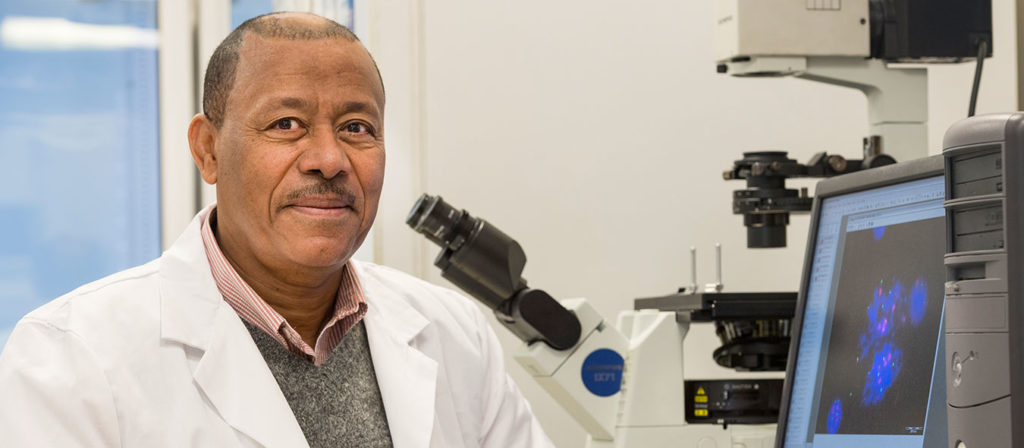What do one in five breast cancers have in common? Large amounts of a protein called HER2 (or human epidermal growth factor receptor 2).
“Every healthy cell produces a normal amount of HER2, but HER2 is produced 10 to 20 times more in a cancer cell,” said Yehenew Agazie, an associate professor of biochemistry at the West Virginia University School of Medicine.
Agazie is researching an alternative treatment for HER2-positive breast cancers, which tend to grow and spread especially fast. The National Cancer Institute, a division of the National Institutes of Health, has awarded him $1.6 million over five years to study the treatment’s effectiveness in preclinical models.
In addition to Agazie, the research team includes
- Yon Rojanasakul, pharmaceutical sciences professor in the WVU School of Pharmacy
- Sijin Wen, assistant professor of biostatistics in the WVU School of Public Health
- Paul Lockman, assistant vice president for experimental therapeutics at the WVU Health Sciences Center and associate director for translational research for the WVU Cancer Institute
“There are different types of drugs—one of them being Herceptin—that are anti-HER2. However, treatments so far show that patients can still develop resistance against those drugs,” he said. “One very important aspect is that all of those anti-HER2 drugs are targeting the already expressed HER2 protein without an impact on the process of expression.”
The compound at the center of Agazie’s new study is different. Instead of inactivating HER2 in cells, it prevents cells from making too much HER2 to begin with. An analogy is cooking dinner in one big pot to cut down on dirty dishes, instead of using every pot in the kitchen and having to wash them all.
In 2017, Agazie and his former doctoral student Zachary Hartmann received a patent for the compound, which has shown promise at preventing breast cancer recurrence in previous laboratory studies.
Now Agazie and his research team will pinpoint how well the compound keeps cancer-causing genes from expressing themselves, prevents normal cells from becoming cancerous, and if tumors do form, stops cancerous cells from overrunning the healthy, surrounding tissue. The group will also determine what dose of the compound maximizes its effectiveness and minimizes its toxicity.
Another benefit of the compound is that it works even if a tumor has grown resistant to other drugs that target HER2-positive cancers. What’s more, the compound is effective against breast cancer that has spread to the brain, a common spot for breast cancer invasion. Treating tumors in the brain is especially vexing because the blood–brain barrier often blocks therapeutic drugs from reaching them.
“Treating brain metastasis is a hard, uphill climb. It’s one of the major hurdles in drug therapy for cancer,” Lockman said. “If this novel drug molecule is successful, this experimental therapeutic could improve the treatment of brain tumors in women with breast cancer.”
Originally from Cassie Thomas for WVU Today and the West Virginia University School of Medicine.
